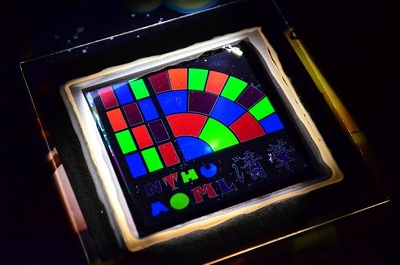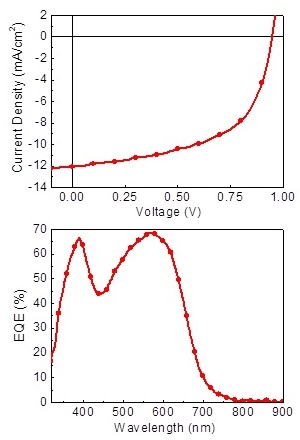Next-Generation Solar Cells

Multicolor semi-transparent organic solar cell.
Organic solar cells (OSC) have garnered considerable research interests owing to their prominent merits such as low cost, lightweight, and mechanical flexibility. At present, solution-processed bulk heterojunction (BHJ) solar cells, based on bicontinuous interpenetrating networks of pi-conjugated polymers and soluble fullerene derivatives, have demonstrated remarkable achievements with power conversion efficiencies (PCEs) in excess of 10%. Beyond that, the small molecule counterparts, particularly p-type organic semiconductors utilized for OSCs also show exceptional promise. The competitive nature of small molecules as compared to polymeric materials can be ascribed to the predominant advantages including well-defined molecular structures, easier purification, and better batch-to-batch reproducibility. Therefore, tremendous research endeavors have been devoted to developing small molecule organic solar cells (SMOSC), exhibiting appreciable PCEs of above 7~8% by using either solution-processed or vacuum-deposited fabrication techniques. We are also interested in novel organic-inorganic hybrid solar cells including dye sensitized solar cells (DSSC) and Perovskite solar cells.

Current density-voltage characteristics and external quantum efficiency spectrum of OSCs based on D-A-A molecules.
We are now developing highly efficient next-generation solar cells in following research projects:
OSCs based on novel donor-acceptor electron push-pull molecules. Hole transporting and electron transporting materials for next-generation solar cells. Perovskite solar cells Microcavity solar cells Solar cells with tandem architectures Plasmonic solar cells